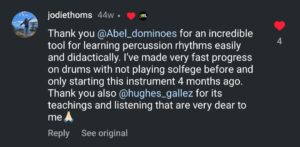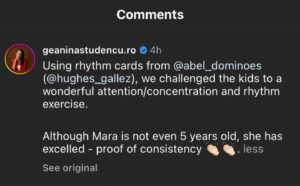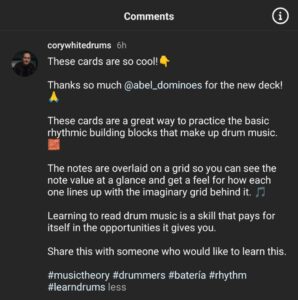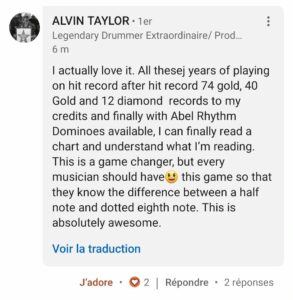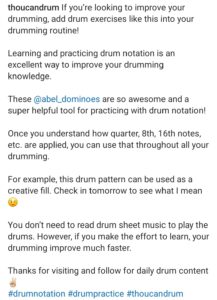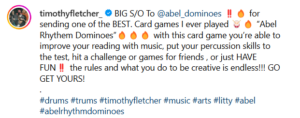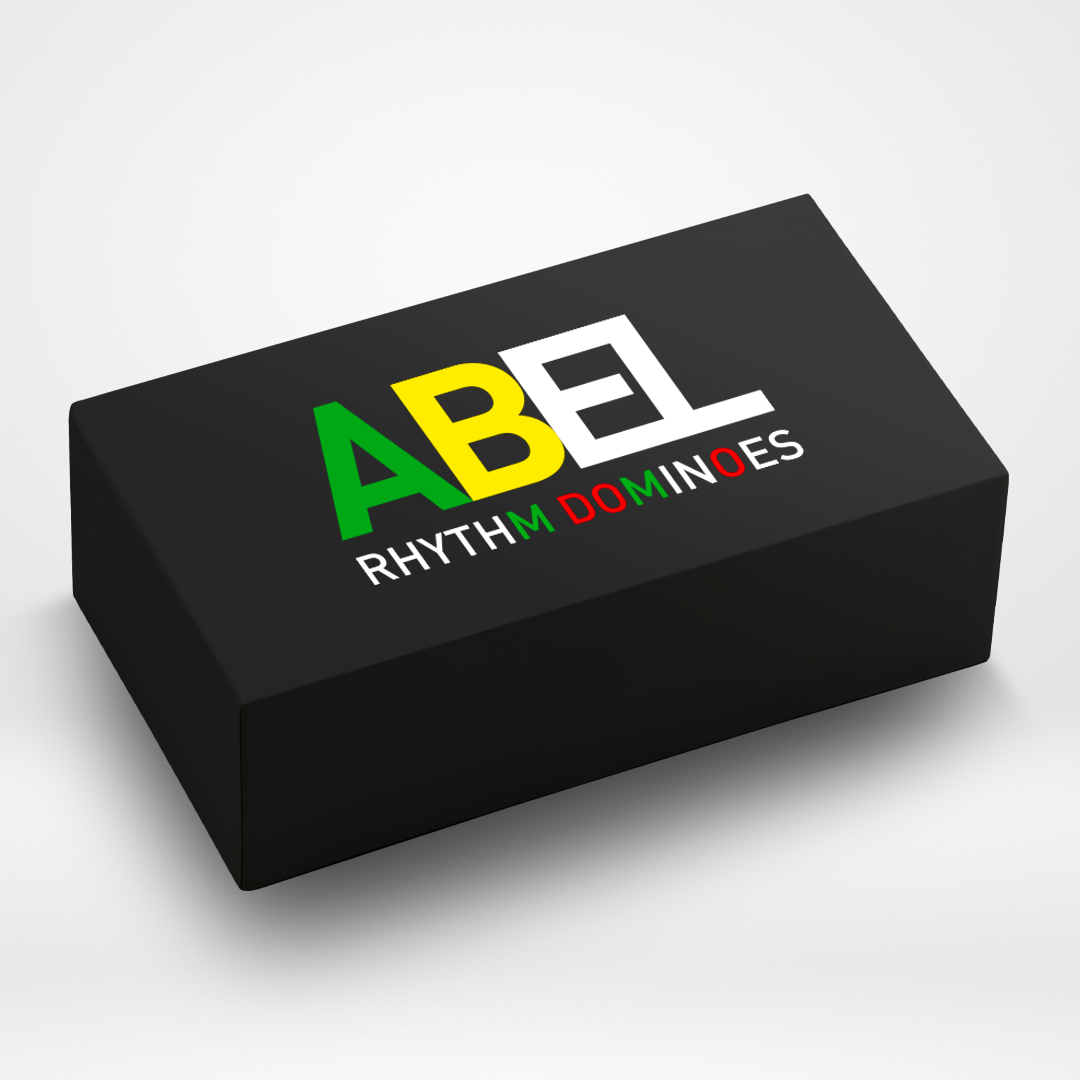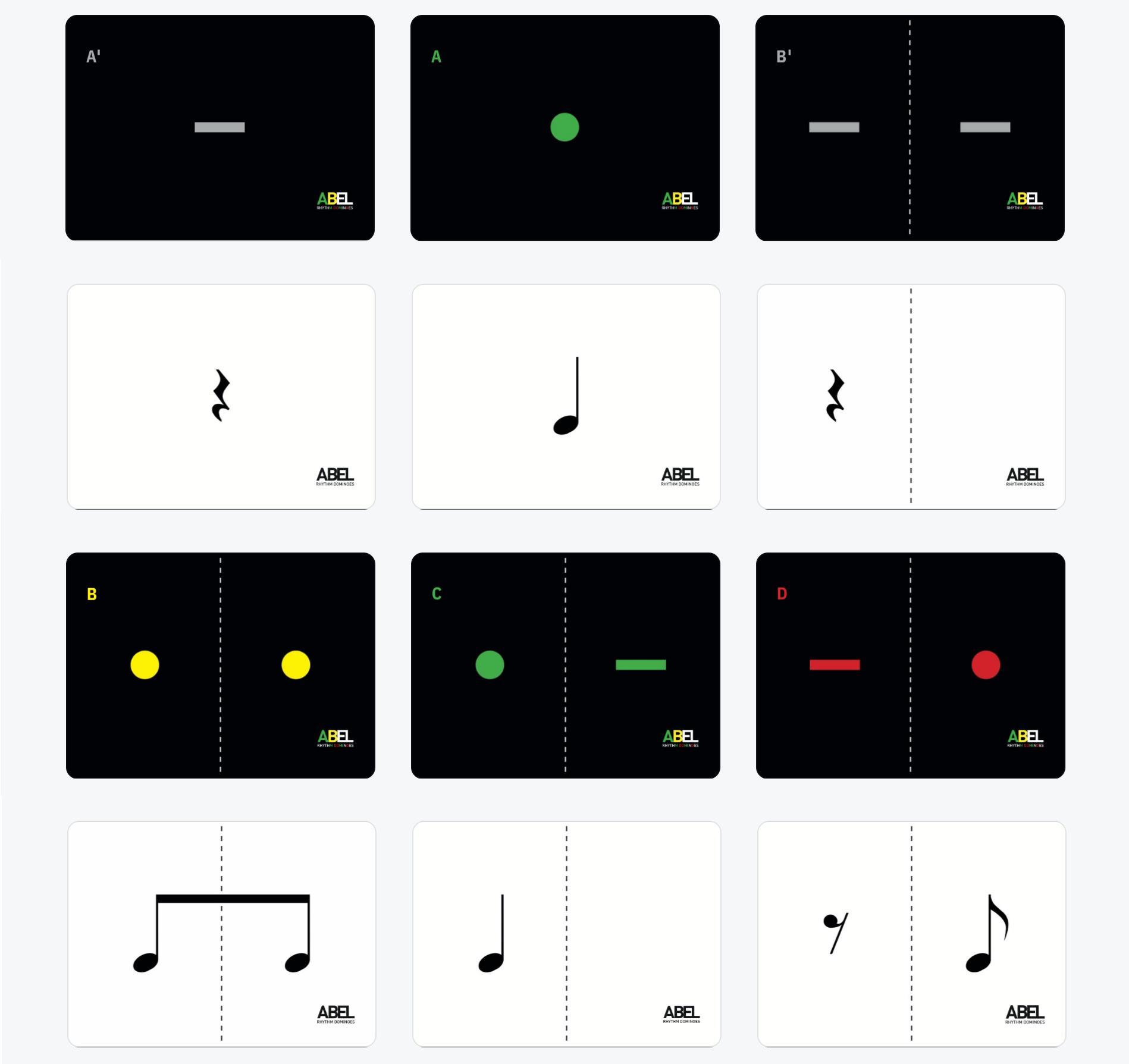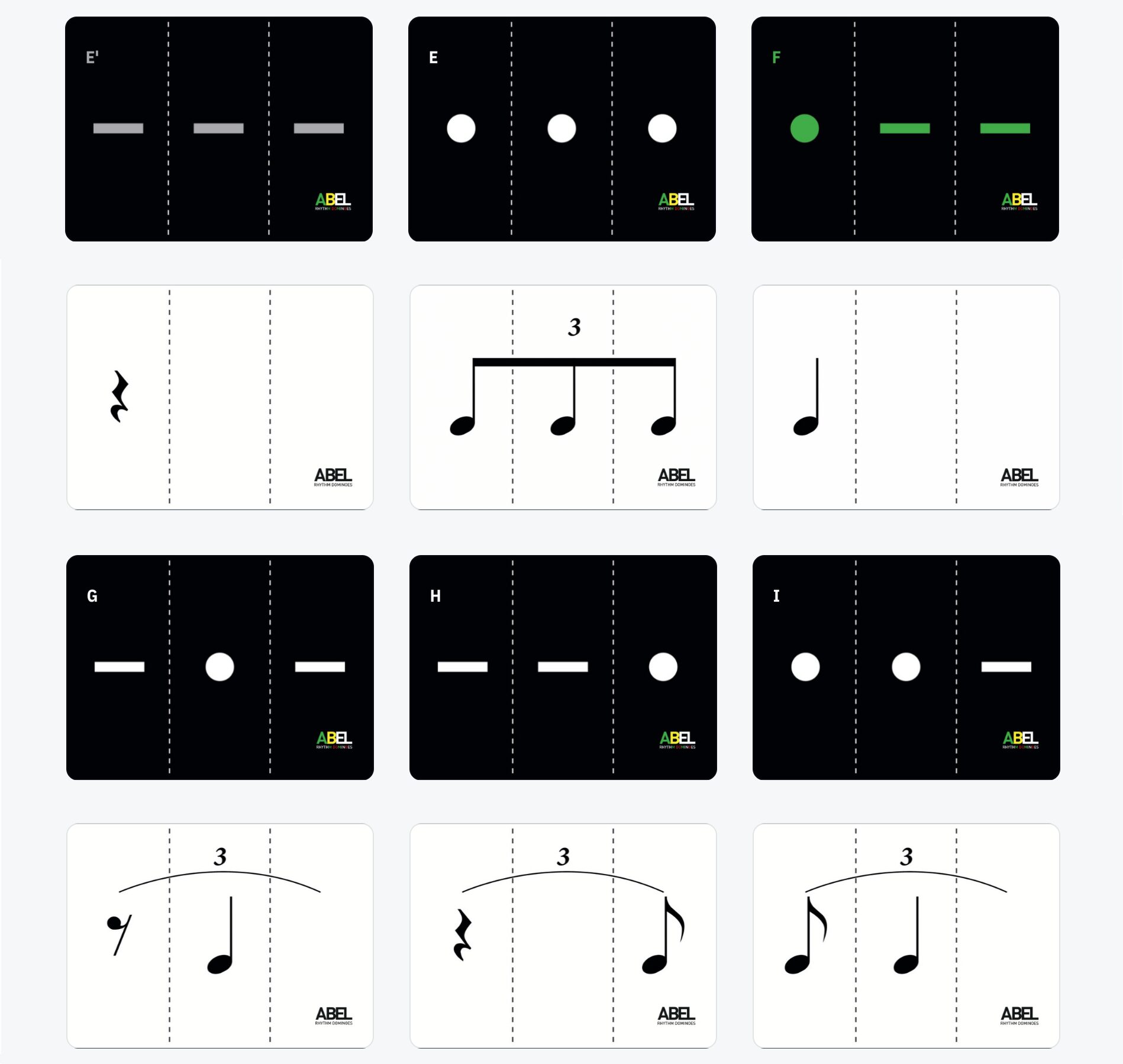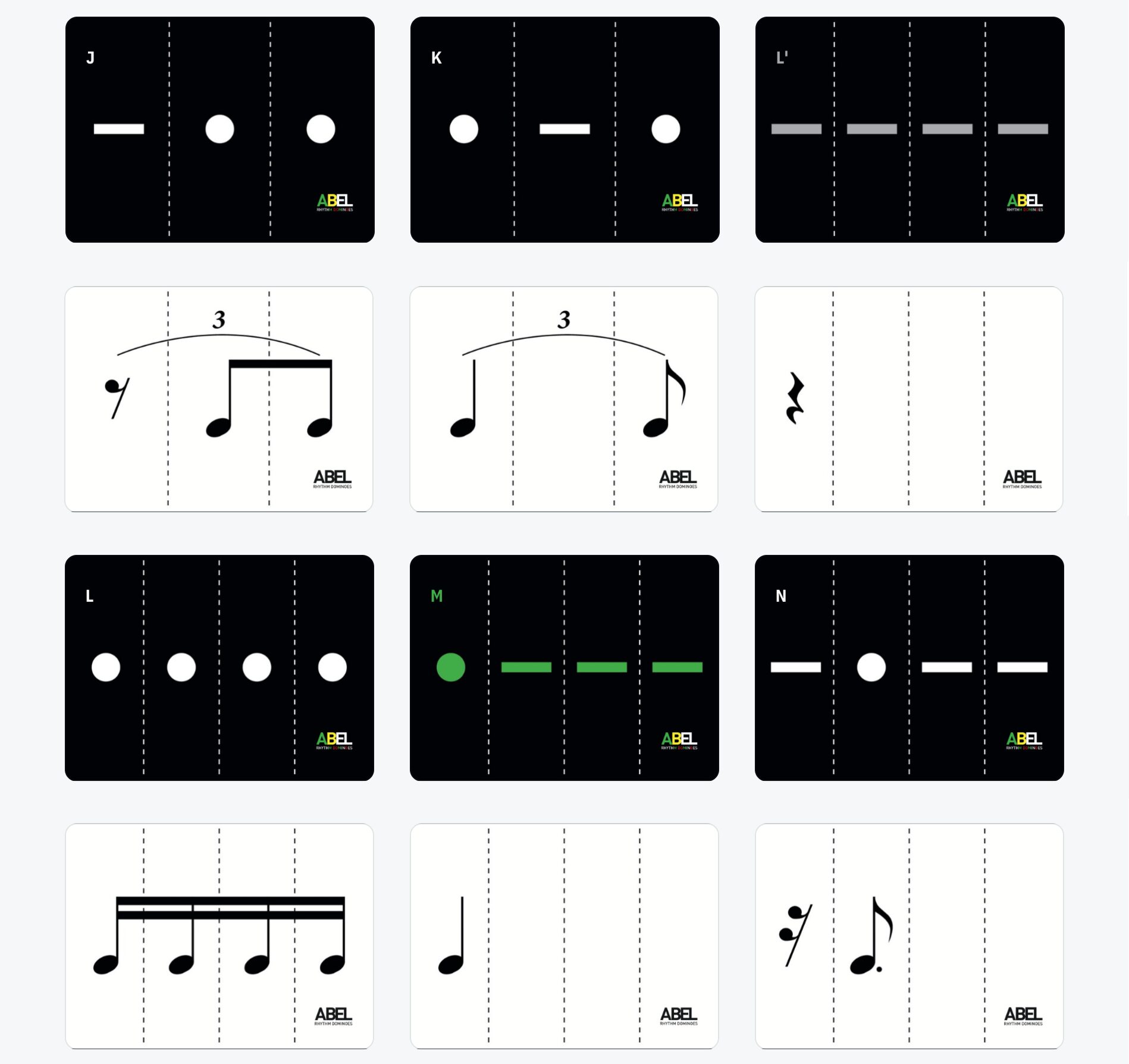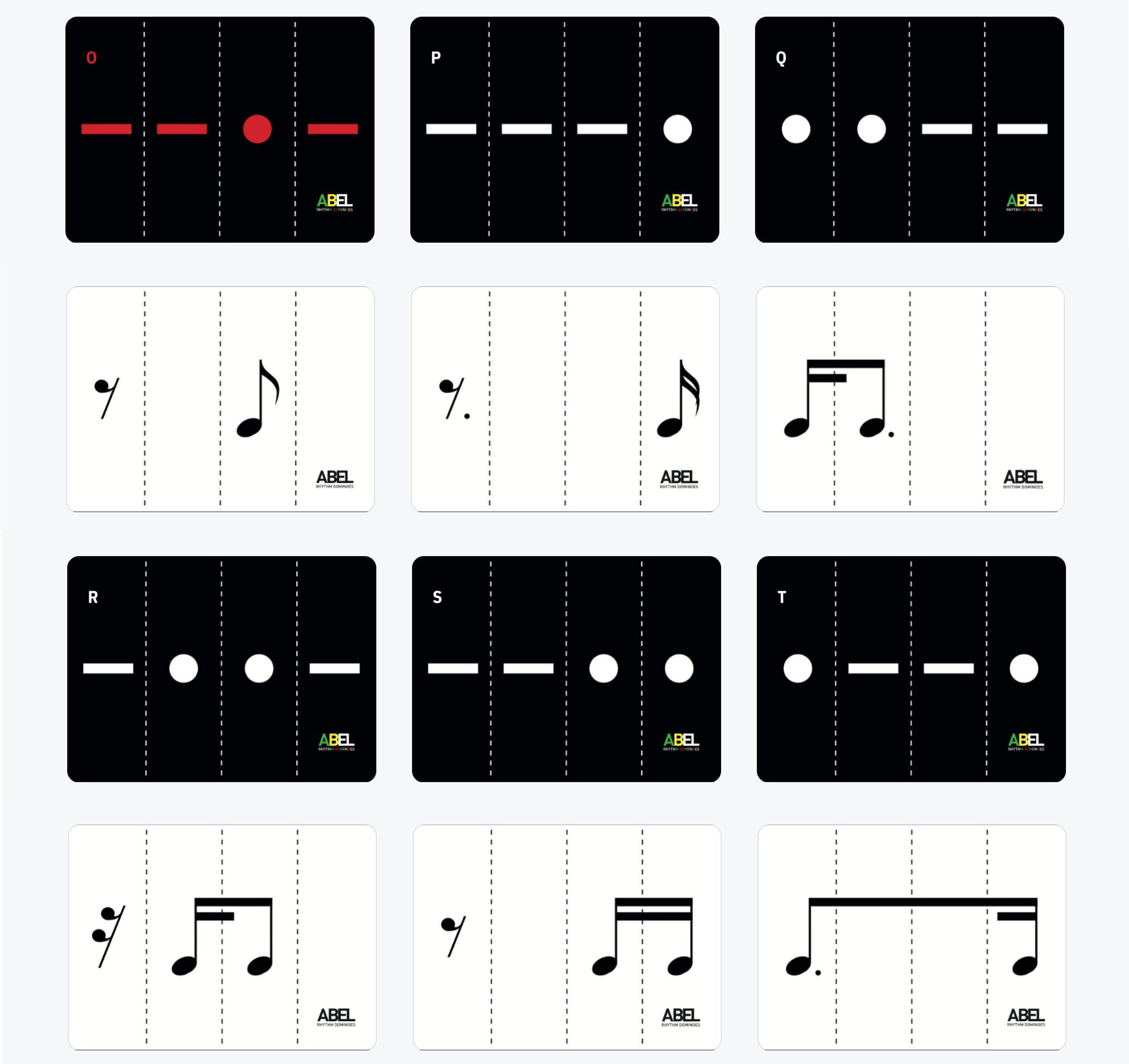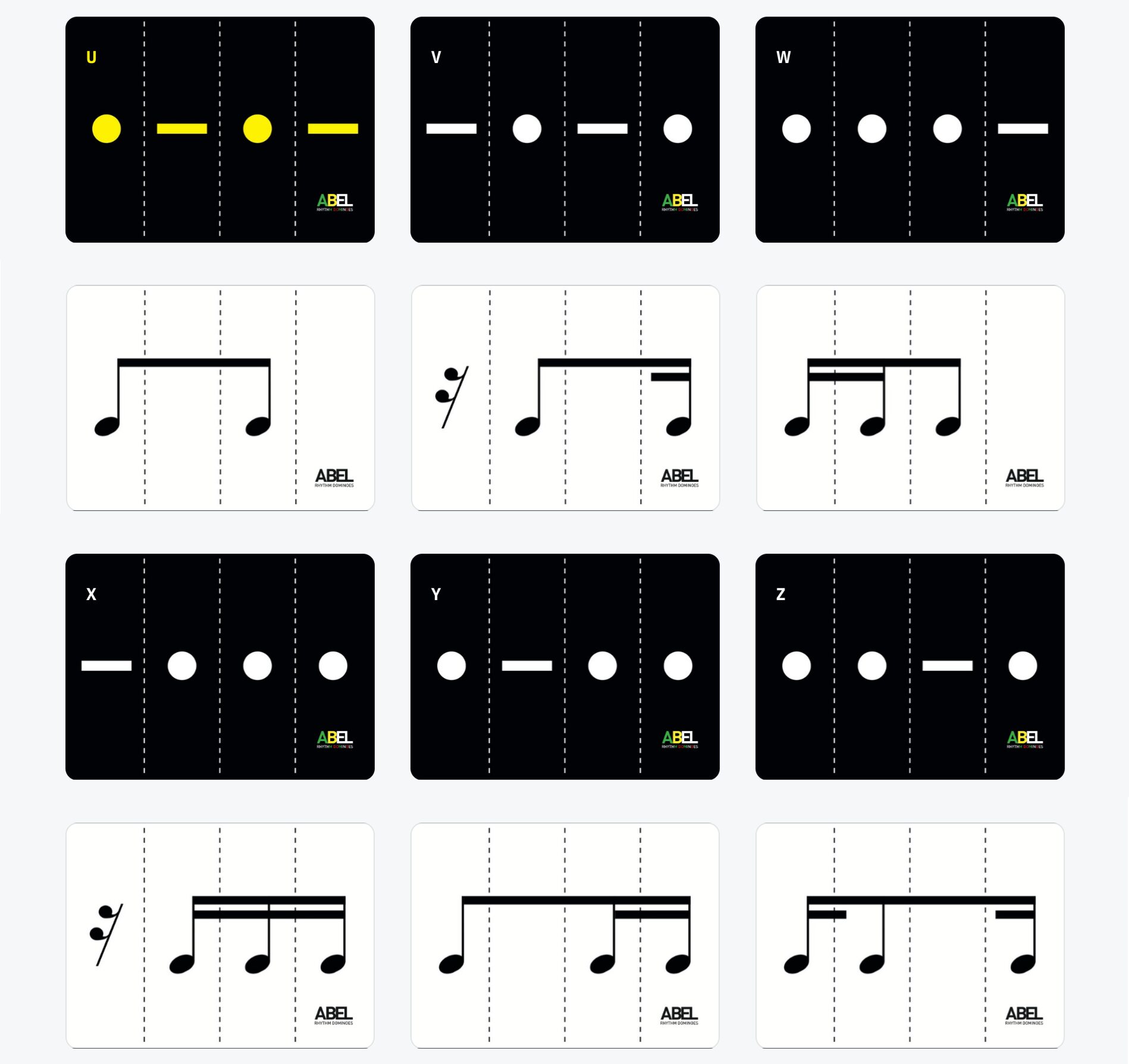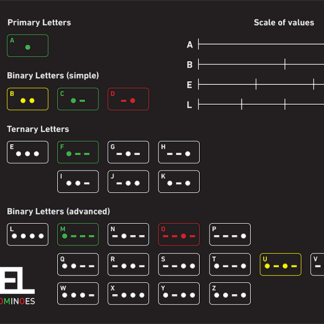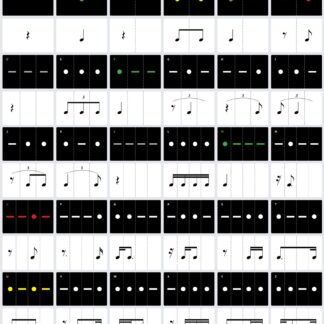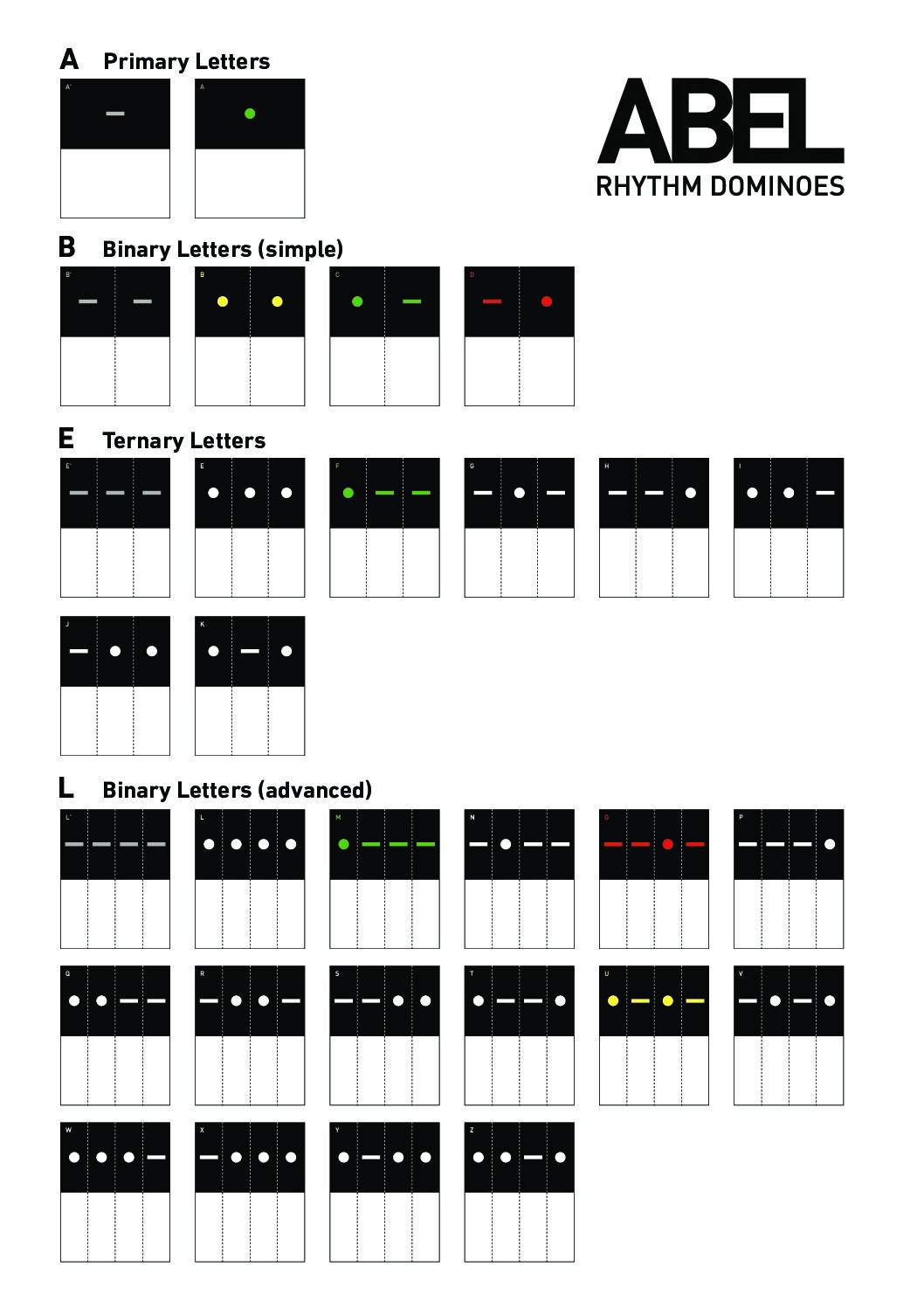Description
Are you searching for a game to learn rhythm & music through play while enjoying it? Don’t search anymore, ABEL Rhythm Dominoes ® – PLAYING CARDS™ is designed for you!
⚫️ The BLACK DECK represents the pulse and its subdivisions (based on the ABEL Dominoes © – Rhythmic Alphabet™) which are shown with rhythmic cards. Each card is associated with a letter of the Latin alphabet (A-Z). The pulse is a steady beat that runs through the music. It’s a bit like a heartbeat or the tick-tock of a clock. When you listen to a piece of music, you might find yourself tapping your foot along to the beat. This is the pulse.
1 CARD = 1 BEAT
The number of symbols (dashes and/or dots) on each card tells you what the subdivision of the pulse is :
1️⃣ A’ or A
2️⃣ B’ or B C D
3️⃣ E’ or E F G H I J K
4️⃣ L’ or L M N O P Q R S T U V W X Y Z
The dots represent the notes that must be played with the instrument of your choice (like claves for example).
The dashes represent rests or the duration of the previously played note.
If you use a musical instrument that allows you to control the duration of the note (like the guitar, the piano or the violin for example), you can choose to consider the dashes as rests or as the extension of the previously played note.
Color codes allow you to easily identify similar rhythms in different subdivisions 🟢🟡🔴
It is important to first work on the rhythmic cards with only dashes (A’B’E’L’) counting them out loud in order correctly and using a metronome to be comfortable when you have to play (A to Z).
ℹ️ Dashes can also be replaced with ghost notes for advanced players.
⚪️ The WHITE DECK represents any rhythmic figures translated into CLASSIC MUSICAL NOTATION :
You will find these rhythmic figures in all musical scores. The notes are overlaid on a grid so you can see the note value at a glance and get a feel for how each one lines up with the imaginary grid behind it.
ABEL Rhythm Dominoes ® – PLAYING CARDS™ is based on a time signature in x/4. That is to say that the reference value is the quarter note/rest but each measure can have the desired number of pulses. A few examples: 1/4, 2/4, 3/4, 4/4, 5/4, …
So 1 beat = (value of) 1 quarter note/ 1 quarter rest
ABEL Rhythm Dominoes ® – PLAYING CARDS™ can be played alone BUT it’s even more fun together !
However you will always need one friend to play it : the METRONOME.
After defining a time signature (the most used in popular music is 4/4) and a tempo (for example : 60 BPM or 100 BPM), play the correct rhythm corresponding to the right card on the right time.
Create your own measure(s) using one or more card(s) (black cards/white cards or both) then set the tempo on the metronome and you’re good to go ! When you’re playing with friends, set several measures to play simultaneously. You can also ask your friend to swap cards during the game. To play rhythm, you can use your hands, body clapping, claves, drums, any percussion instrument or other music instrument like guitar or piano for example.
Blank cards are provided in ABEL Rhythm Dominoes ® PLAYING CARDS™ to write the rhythmic figures yourself!
Item specifics :
30 double-sided playing cards
Dimensions: 57mm x 89mm, 2.25″ x 3.5″
FSC 100% All materials used come from responsibly managed, FSC-certified forests
Spills, bends, and endless shuffling are no match for ABEL Playing Cards. Crafted from a revolutionary, tear-resistant material, these aren’t your average paper cards. They’re engineered to endure countless game nights, staying crisp and vibrant for years to come.
Have fun while learning music with ABEL!
For more details :
Reviews :
